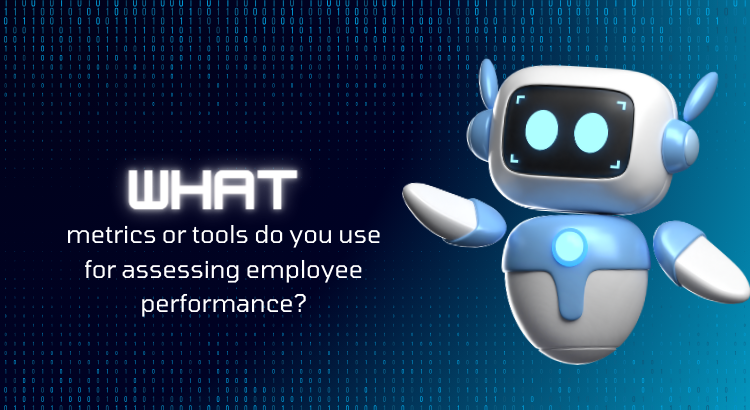Assessing employee performance is an essential aspect of managing a successful business. It not only helps in understanding the progress of each employee but also provides insights on how to improve their performance for the benefit of the organization. However, measuring performance solely based on subjective observations is not enough. That's where metrics and tools come into play.
Metrics and tools are essential for assessing employee performance as they provide accurate and objective data for evaluating an employee's achievements and areas of improvement. They also aid in identifying high-performing employees, determining training needs, and making informed decisions on rewards and recognition.
There are various metrics and tools used for assessing employee performance, and organizations can choose the ones that best align with their goals and objectives. Let's explore some of the commonly used metrics and tools in employee performance evaluation.
1. Key Performance Indicators (KPIs)
KPIs are quantifiable and measurable performance metrics that organizations use to evaluate employee performance. These metrics are specific to the role and responsibilities of an employee and are often linked to the organization's overall objectives. Examples of KPIs include sales revenue, customer satisfaction, and on-time delivery. KPIs help managers to assess employee performance against set targets and goals, making it easier to identify areas for improvement.
2. 360-Degree Feedback
360-Degree feedback is a tool that involves collecting feedback from multiple sources, including peers, subordinates, and managers, to evaluate employee performance. This method provides a holistic view of an employee's performance and helps identify strengths and weaknesses that may not be apparent to a single manager. It also fosters a culture of open communication and feedback within the organization.
3. Performance Appraisal
Performance appraisal is a formal process of evaluating an employee's performance against predefined criteria. It involves setting goals and objectives, measuring progress, and conducting regular performance reviews. Performance appraisals can be done quarterly, semi-annually, or annually. This method allows managers to provide constructive feedback and set expectations for the future, helping employees to improve their performance.
4. Behavioral Observation Scales
Behavioral observation scales (BOS) are tools for evaluating an employee's behavior, attitude, and work habits. This method involves rating employees on specific characteristics such as teamwork, communication, and problem-solving. BOS provides a standardized approach to evaluating employees based on observable behaviors, allowing for fair and objective assessments.
5. Management by Objectives (MBO)
MBO is a performance management approach that involves setting specific, measurable, attainable, relevant, and time-bound (SMART) objectives for each employee. These objectives are agreed upon by the manager and employee, and performance is evaluated based on the achievement of these objectives. MBO helps in aligning employee performance with the organization's goals, providing a clear focus on what employees need to accomplish.
6. Performance Ranking
Performance ranking is a comparative method of evaluating employee performance, where employees are ranked from highest to lowest based on their performance. This method involves considering various factors, such as productivity, quality of work, and adherence to company values. Performance ranking helps in identifying top performers, average performers, and underperformers, allowing managers to make better decisions on promotions, bonuses, and training needs.
In conclusion, assessing employee performance is crucial for the growth and success of any organization. Utilizing appropriate metrics and tools can improve the accuracy and objectivity of performance evaluations, leading to a more engaged and productive workforce. It is essential for organizations to choose the right metrics and tools that best suit their needs and continuously review and update them to ensure their effectiveness. By using these metrics and tools, organizations can create a culture of performance and continuous improvement, leading to the overall success of their business.























Write your comment
Cancel Reply